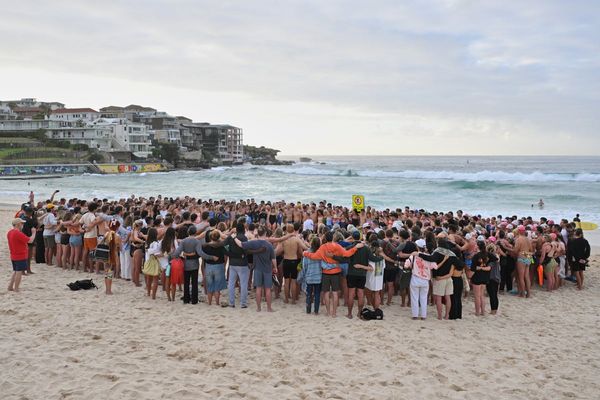
It’s been common practice for many years that Marcus Ericsson is on track during one of the biggest weekends in racing. Just over a decade ago, he was preparing to take on the streets of Monaco as an F1 driver with Caterham (he’d finish 11th). That changed in 2019, when the Swede took on his first Indianapolis 500. It would take only three more Indy 500s for him to become immortalized with the names of legends — his face now gracing the famous world-renown Borg-Warner Trophy.
“A lot of people say it’s a life-changing thing to win that race. And I would say, it’s true,” the 2022 Indy 500 champion shared with Motorsport.com in an exclusive interview.
“It’s the biggest race in the world — especially here in the US,” he said. “It’s like a Super Bowl, but for racing. So, if you win it, it really sort of puts you on a different level in the racing world, especially here in the US. And you will always be a 500 champion, 500 winner. It sorta raises your status by quite a bit.
“For me as well, like just personally, all my career, all the sacrifices and all the work that I put in to get to this point and sort of make all that worth it, times a million. Because you win the biggest race in the world, and you get your face on the Borg-Warner Trophy, and all those things.”

Prior to coming to the States in 2019, when Ericsson would take on the IndyCar series and the 500 race for the first time with Arrow Schmidt Peterson Motorsports, he understood some of the specialness of participating in “The Greatest Spectacle in Racing.” But even the first time experiencing the month of May was overwhelming, while also enlightening.
“I remember my first year in 2019 when I did my first 500 was such an eye opener for me to see, like, the magnitude of this race. And I was just like, ‘Oh, my God, this is so cool.’ And then, when I won it, it was like another level of that. It's like, how much celebrations, how much things you got to do. It's like a year long celebration, basically after it. And that, for me, I think you're never really prepared for that and how that is.”
How to find success at the Indianapolis 500

And it wasn’t an easy race for the then-rookie. He did manage to keep in the top 10 the majority of the race — but ended early after a rear lock-up and spin took him out. 2020 he took on his second 500, now with Chip Ganassi Racing and sporting the Huski Chocolate Chip livery we’d come to associate with his later 500 win. Contact in Turn 1 during the race would end his day in 32nd. 2021 he finally finished the race in 11th, his highest finish yet, having managed to run in second-place on a couple of occasions as well.
While unfortunate circumstances coming from trying to tame an IndyCar on the Indianapolis Motor Speedway ended his first two chances prematurely, Ericsson, like many of his driving counterparts who also ran careers primarily in Europe before taking on the IndyCar series, tend to adapt to the ovals, which are near non-existent there, quite well.
“It's interesting. I think it's a lot about mindset. You know, like you said, oval racing is something you never get to experience in in Europe. So it's very different. But for me, it was one of the big reasons I wanted to come to America and IndyCar — was to try and race the ovals and race [the] 500. I was always sort of intrigued by that sort of challenge of driving in those speeds and having no margin for error, and that really you get from driving, you know, 230 plus miles an hour. It was just something that I wanted to experience.
“I think my curiosity around it helped me become good at it. So I get that's the biggest thing. I think some drivers, they come from Europe, then come over here and they're sort of hesitant about it, and they don't want to, you know… they wish there [were] no ovals and stuff like that. And I think if you have that mindset, it’s gonna be hard to be really good at it. I came over and I was like, I want to learn. I want to be the best at oval racing. And then, you know, I had that kind of mindset, and I think that's helped me a lot to to become a really good oval racer.”

Technically, Ericsson can claim he is among a special group of the best oval (open-wheel) racers after becoming a 500 winner. He nearly claimed it to be true for a second time as well — with the last-lap shootout in 2023 between himself and Team Penske’s Josef Newgarden. He missed earning a back-to-back 500 win by .0974 of a second. Instead, Newgarden earned his first of what would become back-to-back 500 wins.
“It's always gonna be a bit of a sting for me thinking about it,” Ericsson shared. “I was so close going back to back and if that race would have been called like it [had been] called for over 100 years, I would be back-to-back champion. But at the same time, you know, that's, that's how it goes. This race is unique in its own way. And you know, I've accepted that. Whatever happened, happened. If anything, it just made me hungry to try and win again.
“It's always going to be painful to think about how close I was… . It's not something that keeps me up at night. Probably, like I say, giving me more motivation to try and win it.”

But what Ericsson says is key going into his seventh Indy 500 running the No. 28 Andretti Global Allegra car, is patience.
“I sort of have a certain mindset going into the month of May. It's a long month with a lot of practice and qualifying weekend and then more practice, and, you know, it's a long, long build up, and it's about being there for the end of the race to win it, right?
“I always say that patience is the name of the game. For me, it's like being patient and working step by step to get yourself to a point where you can fight for the win. And I think that's what made me successful in ‘22 and ‘23 is having that sort of patience mindset. And I think I've been playing that really well this year. So far, we've been really taking it step by step and getting better each day, and we have put ourselves in a really good spot now going into race weekend. It's a tough one. It's really the most difficult race to win. But I think we have the tool set here.”
But as teams, drivers, and fans know on the Indy 500 weekend, the winner isn’t determined by the driver or team — the Speedway chooses.
“It’s true. I think, ‘22 was my year. [It] was just meant to be, and I guess ‘23 wasn't. So hopefully, I get some some good karma from what happened in ‘23 and ‘24 and then it will be my turn again this year. I wouldn't mind that.”







